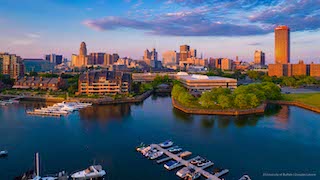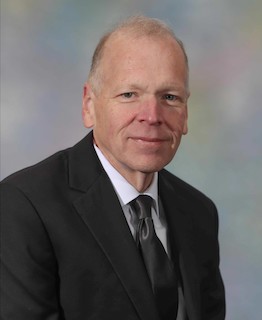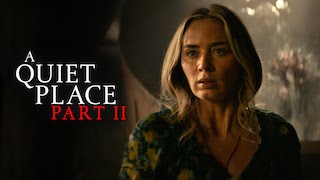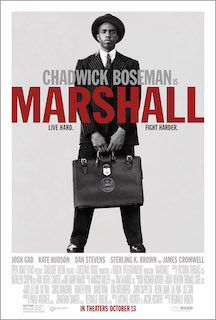 Buffalo and Western New York are rapidly becoming a destination of choice for film and television producers. In the past two years alone, more than 110 productions have been completed, are in-progress or have been announced, including Nightmare Alley, Marshall, and A Quiet Place 2. Tax incentives tell just a part of the story. Over the years the area has developed a sizable film production infrastructure and is still growing. Buffalo FilmWorks claims to be the largest major motion picture film studio in the entire state of New York. The $50 million facility is equipped with over 120,000-square-feet of stage space and 60,000-square-feet of flex space for production support. More studios are under construction. And with a long list of diverse locations – including Niagra Falls – Buffalo can offer urban and suburban settings and farmland, all available within a short distance from one another. Managing all of this is Tim Clark, regional film commissioner of the Buffalo Niagara Film Commission. I recently spoke with Clark, via email, about the current film boom underway in Western New York. Here is that conversation:
Buffalo and Western New York are rapidly becoming a destination of choice for film and television producers. In the past two years alone, more than 110 productions have been completed, are in-progress or have been announced, including Nightmare Alley, Marshall, and A Quiet Place 2. Tax incentives tell just a part of the story. Over the years the area has developed a sizable film production infrastructure and is still growing. Buffalo FilmWorks claims to be the largest major motion picture film studio in the entire state of New York. The $50 million facility is equipped with over 120,000-square-feet of stage space and 60,000-square-feet of flex space for production support. More studios are under construction. And with a long list of diverse locations – including Niagra Falls – Buffalo can offer urban and suburban settings and farmland, all available within a short distance from one another. Managing all of this is Tim Clark, regional film commissioner of the Buffalo Niagara Film Commission. I recently spoke with Clark, via email, about the current film boom underway in Western New York. Here is that conversation:
Digital Cinema Report: How long have you been with the Buffalo Niagara Film Commission?
 Tim Clark: I’ve been film commissioner for 17 years, since 2006.
Tim Clark: I’ve been film commissioner for 17 years, since 2006.
DCR: How long has the film commission existed?
TC: The film commission was established in 2002, so the office has been here for 21 years. It was created right after the Universal Pictures movie Bruce Almighty came to town to shoot scenes.
DCR: How many full feature-film crews are there currently in your immediate area?
TC: There are five-to-six professional film production crews that are living in Buffalo full-time and year-round, even after production wraps.
DCR: What are some of the questions producers typically ask you and your staff and how do you respond?
 TC: Producers ask about crew depth, soundstages, locations, incentives, weather patterns, etc. You name it, we’ve been asked about it. Our responses are prompt and detailed and we’ve closed a lot of deals because of that. Once the producers visit our area, that typically seals it for us. They see the many varied locations, the lack of heavy traffic, the cooperative spirit of government and the community, the affordability of goods and services, etc. This very often leads to repeat business – in fact, we have a producer/director team who came to shoot a Christmas movie eight years ago and they just wrapped their twenty-second movie here in Western New York. We hear often that our crew base is exceptionally talented and the creative energy in our city is unexpected and palpable.
TC: Producers ask about crew depth, soundstages, locations, incentives, weather patterns, etc. You name it, we’ve been asked about it. Our responses are prompt and detailed and we’ve closed a lot of deals because of that. Once the producers visit our area, that typically seals it for us. They see the many varied locations, the lack of heavy traffic, the cooperative spirit of government and the community, the affordability of goods and services, etc. This very often leads to repeat business – in fact, we have a producer/director team who came to shoot a Christmas movie eight years ago and they just wrapped their twenty-second movie here in Western New York. We hear often that our crew base is exceptionally talented and the creative energy in our city is unexpected and palpable.
DCR: How can producers benefit from the various tax incentives available to them?
 TC: Currently the New York State Tax Credit Program is 25 percent of qualified expenses plus an additional 10 percent of qualified expenses to shoot in upstate cities like Buffalo and Niagara Falls. The credit is expected to change to 30 percent plus the additional 10 percent starting July 1st. We are waiting for the state budget to be passed with the new proposals.
TC: Currently the New York State Tax Credit Program is 25 percent of qualified expenses plus an additional 10 percent of qualified expenses to shoot in upstate cities like Buffalo and Niagara Falls. The credit is expected to change to 30 percent plus the additional 10 percent starting July 1st. We are waiting for the state budget to be passed with the new proposals.
 DCR: Many lawmakers oppose film incentives. How do you see incentives benefitting Buffalo and the state?
DCR: Many lawmakers oppose film incentives. How do you see incentives benefitting Buffalo and the state?
TC: The New York State Film Tax Credit Program has made a very big impact on our local economy. It is safe to say that it has created a whole new industry here and is putting a lot of people to work. In addition to the tangible incentive, the costs for everything from lodging to catering to locations are much less than in traditional production centers.
DCR: What local resources are there for film projects?
TC: We have plenty of certified soundstages in the region. By this fall, we will have more than ten stages of varied size including one stage that will be one of the largest in North America at 80,000 square feet. We also have good support services which include camera, grip and electric rental houses, expendable stores, casting agencies, etc. Our crew base is deep and experienced and there are many Screen Actors Guild members and SAG eligible actors who live here.
DCR: With warm weather around the corner and the pandemic easing, what upcoming productions can you talk about?
TC: We seldom talk about future projects since most producers prefer to keep projects close to the vest and things can change frequently. It is safe to say that we are scouting for some pretty large productions that we feel will turn into solid motion pictures and episodic television series to be shot in our region.
